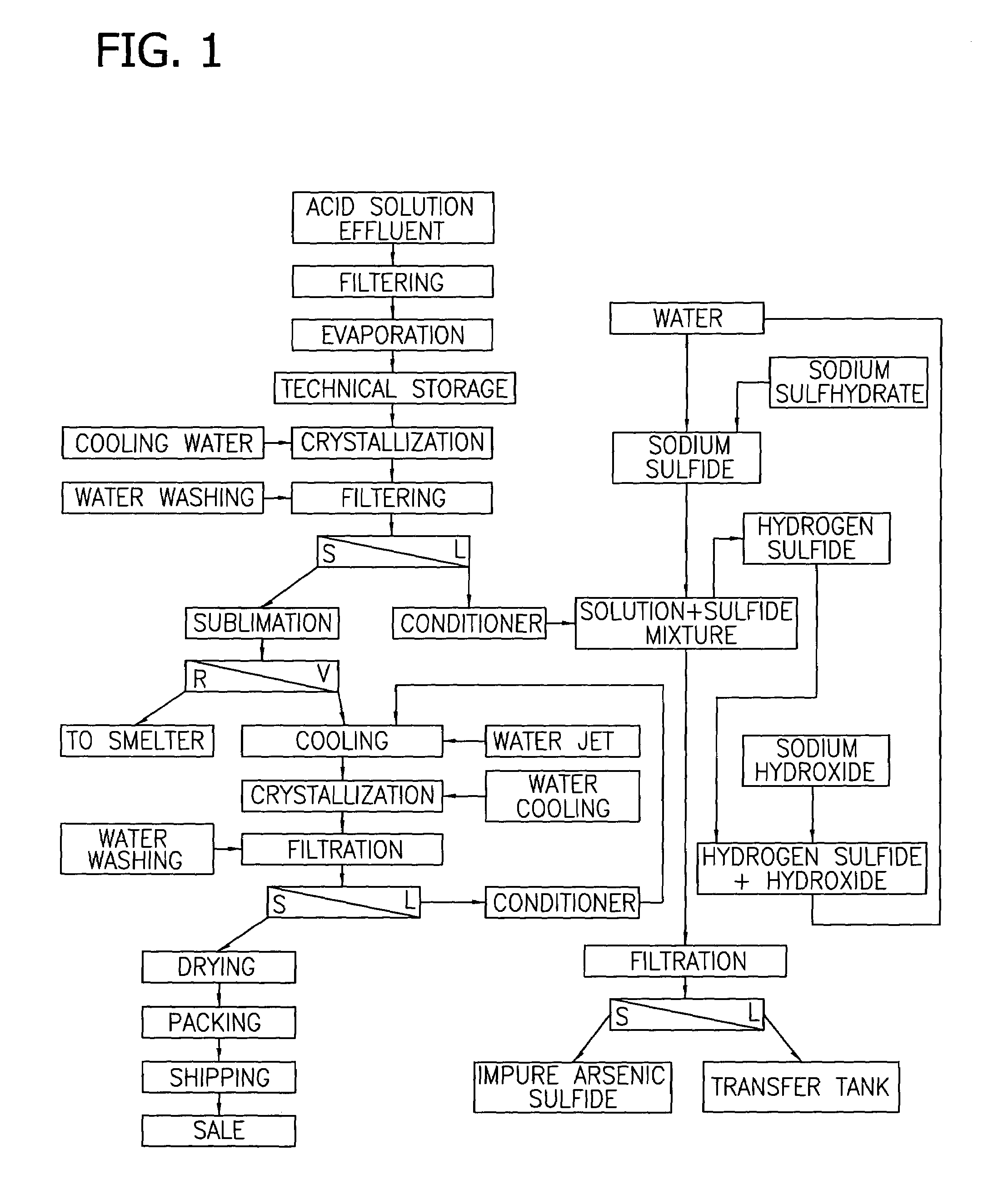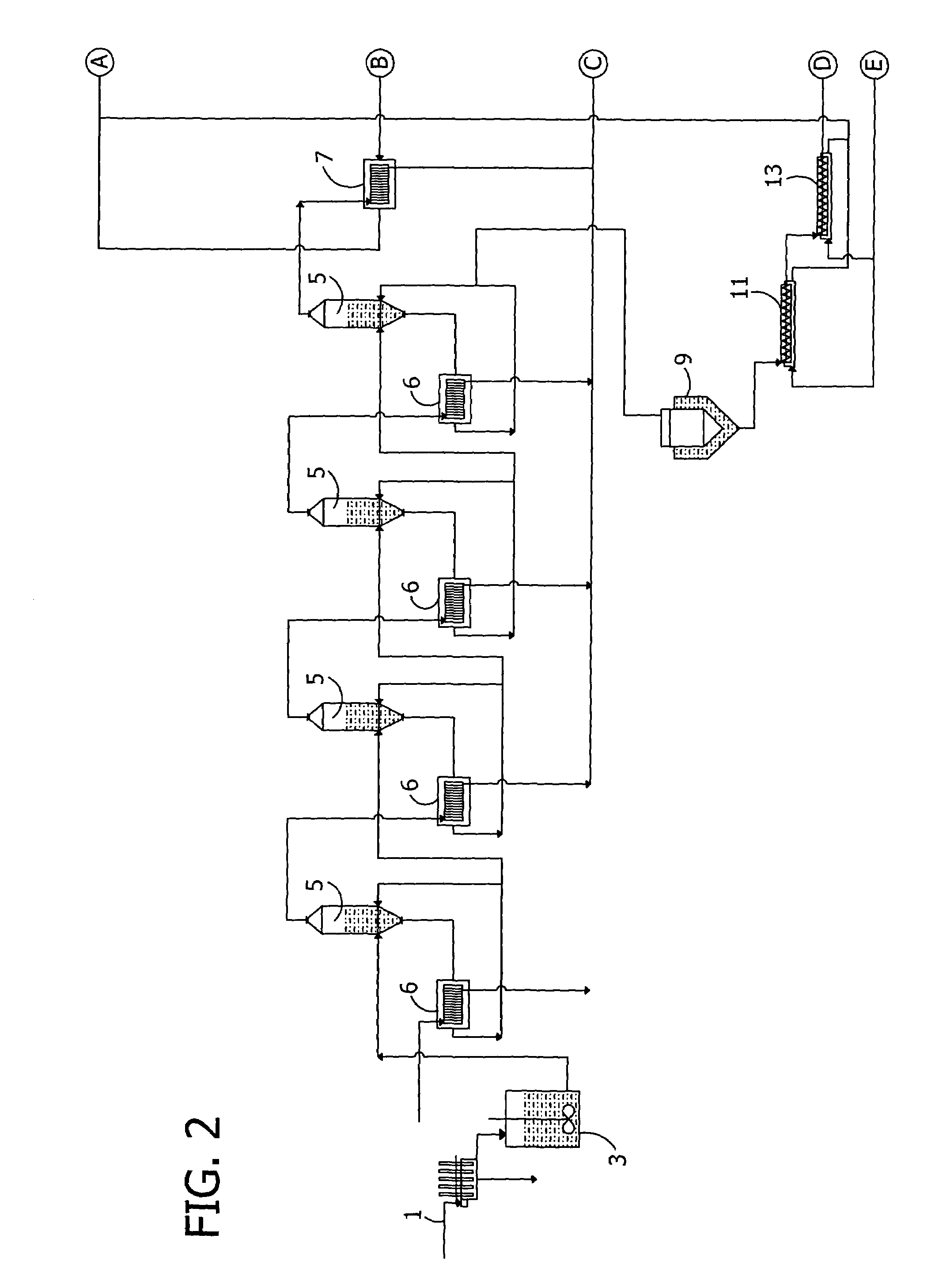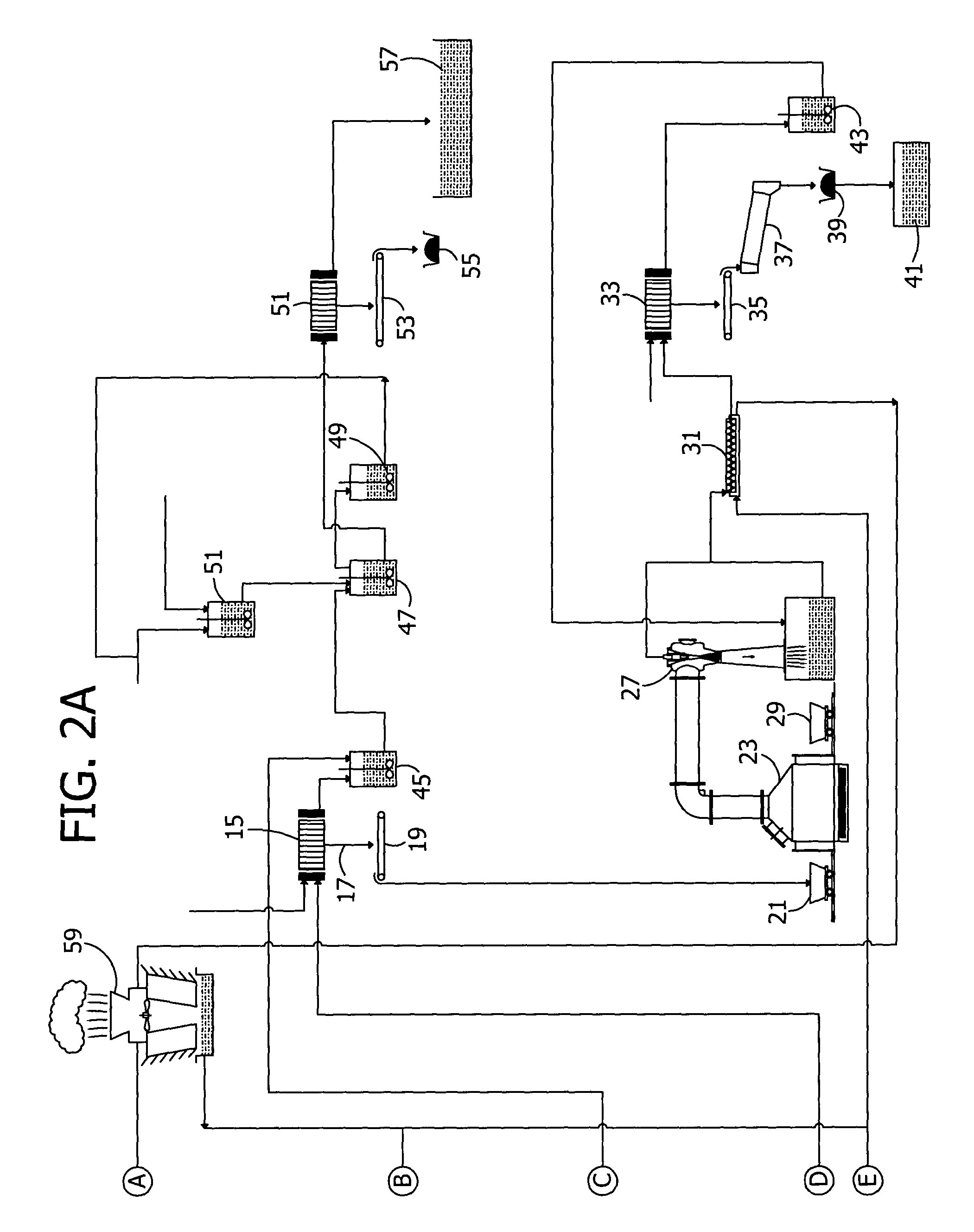Process for recovering arsenic from acidic aqueous solution
a technology of acidic aqueous solution and arsenic, which is applied in the direction of arsenic oxide/hydroxide/oxyacid, differential sedimentation, solid separation, etc., can solve the problems of significant cost and operational challenges of the copper recovery process for arsenic-containing residues, and achieve the effect of minimizing their potentially negative effects on the environmen
- Summary
- Abstract
- Description
- Claims
- Application Information
AI Technical Summary
Benefits of technology
Problems solved by technology
Method used
Image
Examples
example 1
[0043]This example demonstrates the evaporation and concentration of an arsenic solution followed by crystallization and filtration to recover commercial grade arsenic. The experiment was begun by heating a solution (2000 cc) containing copper (0.63 g / L), iron (0.107 g / L), arsenic (9.406 g / L) and antimony (0.036). The solution was heated to reduce the volume to 250 cc. During the heating, samples of the solution were collected when the volume was reduced to 1000 cc. At 1000 cc, the solution had an arsenic concentration of 18.45 g / liter and 1.92% of the of the original arsenic content had precipitated. When the volume was finally reduced to 250 cc, the solution had an arsenic concentration of 46.66 g / liter, and 50.65% of the initial arsenic content precipitated or crystallized.
[0044]By cooling the 250 cc solution to 10° C., a further crystallization was obtained. Filtration separated the crystals. The supernatant liquid amounted to 180 cc of solution, containing 8.575 g / liter arsenic...
example 2
[0045]This example demonstrates the recovery of arsenic from the gas-washing effluent of a sulfuric acid plant. The experiment was conducted by heating a solution (1,144 L) obtained from a gas-washing tower of a sulfuric acid plant in sequential stages. The solution contained arsenic (11.602 g / L) and sulfuric acid (49.9 g / L). The solution was heated in sequential stages to a reduced volume of 96.5 liter. The solution was then cooled to 10° C., which caused arsenic trioxide to crystallize. Analysis of the crystals indicated that the crystals contained 97.5% arsenic, which is commercial quality.
Analysis of the supernatant liquid indicated that the solution consisted of 13.07 g / L arsenic and 590 g / liter of sulfuric acid.
[0046]The supernatant liquid was then treated with sodium sulfide to further recover arsenic. After the addition of sodium sulfide, the solution contained about 580 g / L sulfuric acid with less than 5 ppm arsenic. Thus, the solution could be used as a weak acid in other ...
PUM
| Property | Measurement | Unit |
|---|---|---|
| temperature | aaaaa | aaaaa |
| temperature | aaaaa | aaaaa |
| concentration | aaaaa | aaaaa |
Abstract
Description
Claims
Application Information
 Login to View More
Login to View More - R&D
- Intellectual Property
- Life Sciences
- Materials
- Tech Scout
- Unparalleled Data Quality
- Higher Quality Content
- 60% Fewer Hallucinations
Browse by: Latest US Patents, China's latest patents, Technical Efficacy Thesaurus, Application Domain, Technology Topic, Popular Technical Reports.
© 2025 PatSnap. All rights reserved.Legal|Privacy policy|Modern Slavery Act Transparency Statement|Sitemap|About US| Contact US: help@patsnap.com



